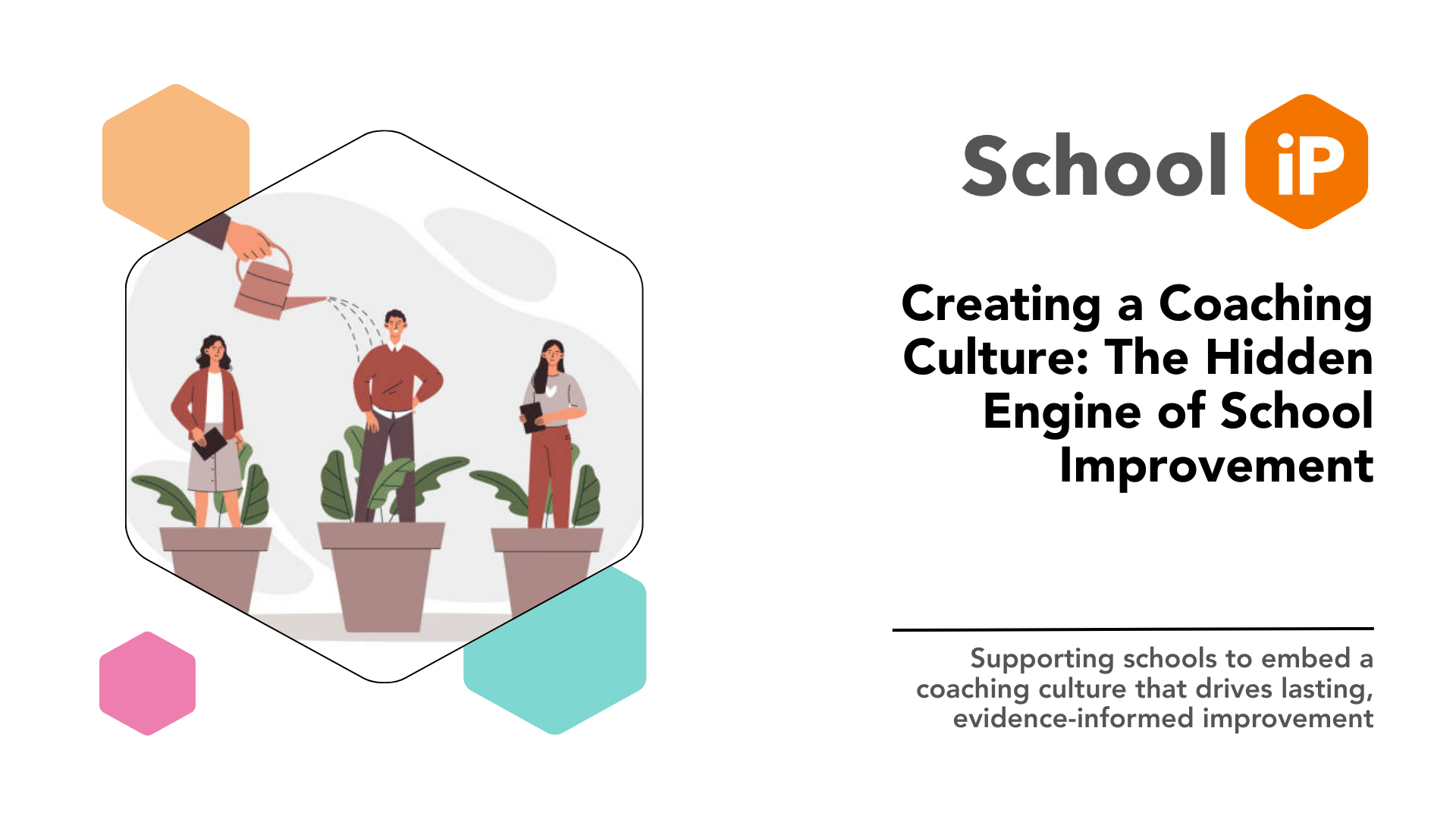Creating a Coaching Culture: The Hidden Engine of School Improvement


In schools today, improvement often focuses on what we can see: lesson plans, data, systems, policies. But it's the less visible elements that often make the biggest difference.
One of the most powerful tools for change is a coaching culture.
When coaching becomes part of everyday practice, it shifts how teachers grow, how leaders lead, and how people work together. It’s not just a method; it becomes a mindset that helps everyone in the school move forward.
But what does that actually look like in practice?
A coaching culture is not just about booking in formal one-to-one sessions.
It means creating a shared way of working where:
Leaders ask thoughtful questions instead of giving quick instructions
Staff feel confident reflecting on their work and identifying next steps
Conversations are constructive, not judgmental
As Sue Atkinson explained during our recent SchooliP webinar:
“We often think line management is about telling people what to do. But if we do it with them, and alongside them, the change is far more likely to be sustainable.”
This kind of leadership builds trust. It gives people ownership of their development, while still keeping high expectations in place.
Start by helping leaders learn how to ask better questions. In training sessions, model what coaching sounds like. Discuss what to avoid, like jumping in too soon or leading someone to your own opinion.
Create a consistent set of coaching-style questions. Build them into professional reviews or regular check-ins using SchooliP templates. This helps all line managers work in the same way, and gives staff a clear sense of what to expect.
You don’t need a formal meeting to coach. Everyday conversations in the corridor or department office can be powerful. Asking "What do you think is holding that back?" is often more useful than giving advice straight away.
Use stakeholder feedback tools in SchooliP to check in with staff regularly. Do they feel supported? Do they experience their line management conversations as helpful and growth-focused? This helps keep the culture consistent.
SchooliP isn’t just for logging targets or tracking performance. It supports a coaching culture by:
Giving line managers space to ask reflective questions
Encouraging staff to share evidence and thoughts on their development
Making conversations more open, structured, and easy to revisit
It brings everything together in one place, reducing admin and helping people focus on the conversation itself.
Coaching is not a soft option. It is a structured, evidence-informed way of helping people improve.
When schools commit to coaching as a shared way of working, they build a culture where people feel heard, supported and ready to take responsibility. That’s when real improvement happens.
SchooliP helps make that possible, not by replacing the conversation, but by giving it the clarity and structure it needs.